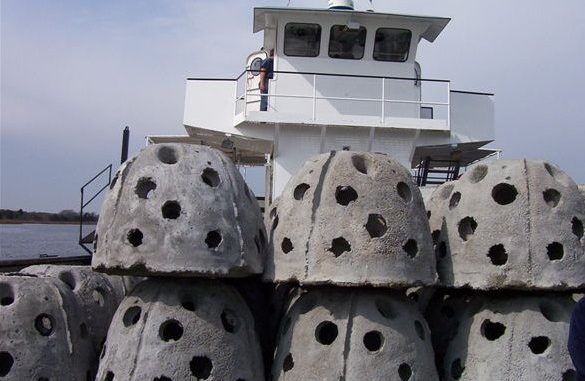
Onslow Beach Artificial Reef Association gets $637,500 grant
Fishermen in the southern part of Onslow Bay will soon be fishing on improved habitat courtesy of the Coastal Recreational Fishing License and the Onslow Bay Artificial Reef Association; the OBARA was awarded $637,500 in the most-recent round of grants funded by income from the saltwater fishing license. The money will be used to enhance the size and effectiveness of three artificial reefs off New Hanover County in Onslow Bay.
The reefs that will benefit from the enhancements are AR 364, the Billy Murrell Reef, which is approximately six nautical miles from the Masonboro Inlet and Topsail Inlet sea buoys; AR 370, the Meares Harris Reef, which is approximately 3.5 nautical miles from the Masonboro Inlet sea buoy; and AR 378, the Phillip Wolfe Reef, approximately 2.6 nautical miles from the Carolina Beach Inlet sea buoy.The projects will be administered under direction of the N.C. Division of Marine Fisheries Artificial Reef Program.
“We are honored to be partnered with the N.C. Division of Marine Fisheries on this,” said Rita Merritt, OBARA’s executive director. “Artificial reefs have a positive impact on many different levels in our area. What we’re doing is putting an oasis in the sea. These are areas that usually are deserts. They don’t have plant life or habitat that is conducive to being productive spawning areas for some of our inshore fisheries.”
Merritt said artificial reefs benefit the fisheries; that point was driven home when UNCW students dove the first OBARA reef site (AR 372) a year after 128 reef balls had been added and filmed the reef balls already covered with marine growth and holding sheepshead, black sea bass, grunts and gag grouper.
Merritt said OBARA had also joined forces with Fish for Tomorrow, an organization that focuses on popular fish such as flounder, as well as raising awareness of the fragility of fish populations.
Tim Barefoot, executive director for Fish for Tomorrow and a member of OBARA’s board of directors, said, “I am very pleased the NCDMF has chosen this CRFL grant application for funding, as it will be a huge step in the right direction to assist the southern flounder stock rebuilding process. Artificial reefs benefit other species such as grey trout, both black and red drum, sheepshead and more. This is not a ‘magic bullet’ that will solve our flounder issues, but it’s a great start. Projects of this size have the ability to rapidly improve nearshore recreational fishing and diving.”
OBARA plans to begin manufacturing reef balls for the project later summer, with deployment to follow in the late fall and winter. This will be the largest artificial- reef project ever funded in North Carolina. For more information about OBARA and these projects, visit the web site at www.obara-ncreefs.org or www.NCreefs-OBARA.org.


Be the first to comment